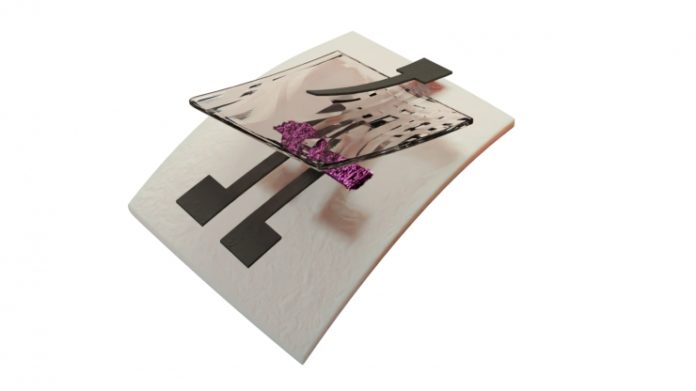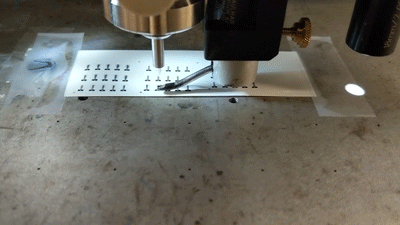
There is hope for a new generation of recyclable electronics to help fight the growing global epidemic of electronic waste.
Behind the increasingly use of electronics into daily life, there’s an ever-growing pile of discarded devices that either don’t work anymore or have been cast away in favour of a newer model. The United Nations estimate that less than a quarter of the millions of pounds of electronics thrown away each year is recycled. This estimate is likely to increase as the world of 5G devices and the Internet of Things (IoT) continues to expand.
The problem is, electronic devices are difficult to recycle. So far, scraps of copper, aluminum and steel are proven to be recyclable but the silicon chips at the heart of the devices are not.
To address this issue, researchers from Duke University demonstrate that a completely recyclable, fully functional transistor made out of three carbon-based inks can be easily printed onto paper or other flexible, environmentally friendly surfaces.
“Carbon nanotubes and graphene inks are used for the semiconductors and conductors, respectively. While these materials are not new to the world of printed electronics”, Aaron Franklin, the Addy Professor of Electrical and Computer Engineering at Duke says, “the path to recyclability was opened with the development of a wood-derived insulating dielectric ink called nanocellulose”.
“Silicon-based computer components are probably never going away, and we don’t expect easily recyclable electronics like ours to replace the technology and devices that are already widely used,” Franklin states. “But we hope that by creating new, fully recyclable, easily printed electronics and showing what they can do, that they might become widely used in future applications.”
“Nanocellulose is biodegradable and has been used in applications like packaging for years,” said Franklin. “And while people have long known about its potential applications as an insulator in electronics, nobody has figured out how to use it in a printable ink before. That’s one of the keys to making these fully recyclable devices functional.”

A method for suspending crystals of nanocellulose
To achieve this fully recyclable printed electronics, researchers developed a method for suspending crystals of nanocellulose. Crystals were extracted from wood fibers that — with the sprinkling of a little table salt — yields an ink that performs admirably as an insulator in their printed transistors. Using the three inks in an aerosol jet printer at room temperature, the team shows that their all-carbon transistors perform well enough for use in a wide variety of applications, even six months after the initial printing.
The team then demonstrates just how recyclable their design is. By submerging their devices in a series of baths, gently vibrating them with sound waves and centrifuging the resulting solution, the carbon nanotubes and graphene are sequentially recovered with an average yield of nearly 100%. Both materials can then be reused in the same printing process while losing very little of their performance viability. And because the nanocellulose is made from wood, it can simply be recycled along with the paper it was printed on.
Compared to a resistor or capacitor, a transistor is a relatively complex computer component used in devices such as power control or logic circuits and various sensors. Franklin explains that, by demonstrating a fully recyclable, multifunctional printed transistor first, he hopes to make a first step toward the technology being commercially pursued for simple devices. For example, Franklin says he could imagine the technology being used in a large building needing thousands of simple environmental sensors to monitor its energy use or customized biosensing patches for tracking medical conditions.
“Recyclable electronics like this aren’t going to go out and replace an entire half-trillion-dollar industry by any means, and we’re certainly nowhere near printing recyclable computer processors,” said Franklin. “But demonstrating these types of new materials and their functionality is hopefully a stepping stone in the right direction for a new type of electronics lifecycle.”
The 2021 March/April issue of 3D ADEPT Mag addresses “the current reality of «printed electronics for automotive applications”.
Remember, you can post job opportunities in the AM Industry on 3D ADEPT Media free of charge or look for a job via our job board. Make sure to follow us on our social networks and subscribe to our weekly newsletter : Facebook, Twitter, LinkedIn & Instagram ! If you want to be featured in the next issue of our digital magazine or if you hear a story that needs to be heard, make sure you send it to contact@3dadept.com





